4505 Golden Dog ‘Zilla Style
This is 4505’s signature dog, studded with bacon and smoked, then topped with Namu Kimchi $$$ sauce, scallions, and chicharrones. Procured at the Ferry Building Farmers Market on Saturday.
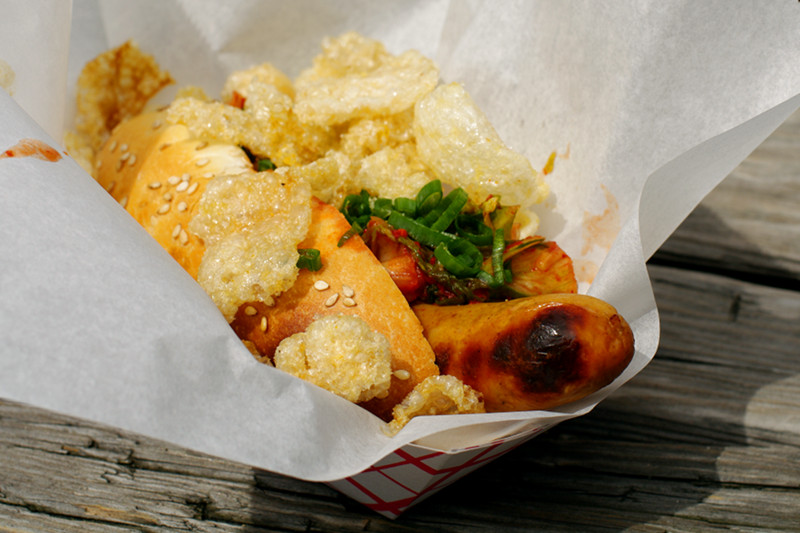
I like to eat, I like to cook, and I like to blog about the both.
This is 4505’s signature dog, studded with bacon and smoked, then topped with Namu Kimchi $$$ sauce, scallions, and chicharrones. Procured at the Ferry Building Farmers Market on Saturday.

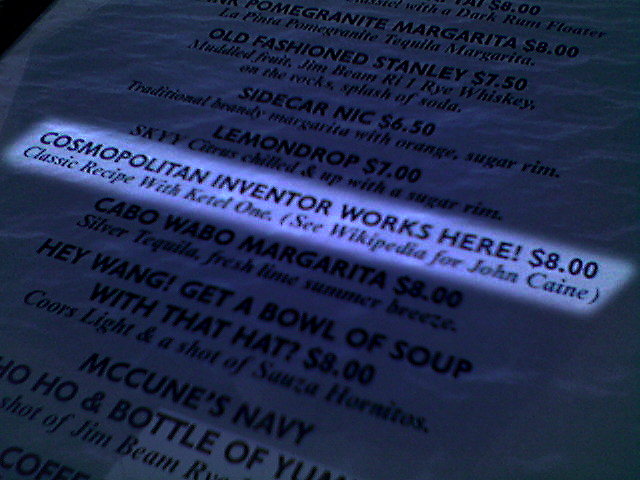
Only in San Francisco would a cocktail menu tell me to look it up on Wikipedia. The article: Cosmopolitan (cocktail), and the bar: Hi Dive, FM’s perennial happy hour spot.

As seen at Trader Joe’s. We may have started a trend.
I got an email from someone out of the blue recently asking for some resources on home cheesemaking. So I put together a list and sent it off. Since I had it already laid out, I figured I might as well throw it into a blog post for any future queries.
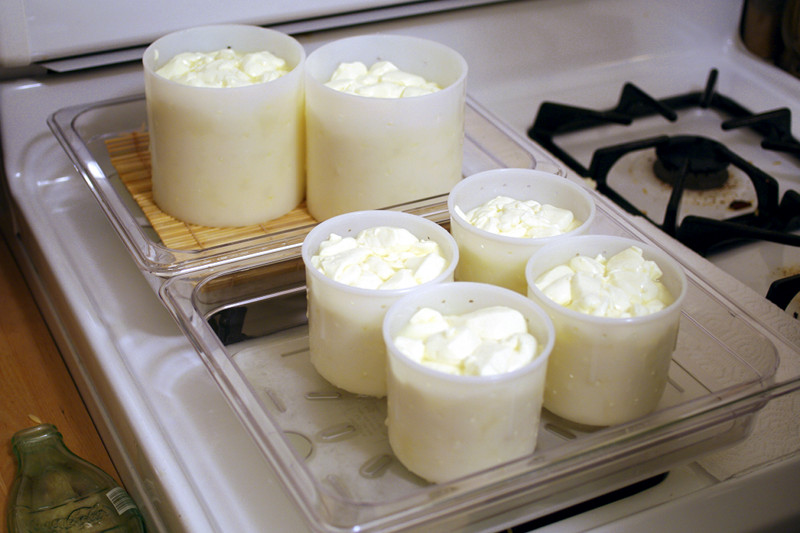
The New England Cheesemaking Supply Company has a great and very affordable kit: 30 Minute Mozzarella & Ricotta Kit. If you decide to move beyond mozzarella and ricotta, they also have a whole array of supplies for the home cheesemaker.
Another place to get supplies is Beverage People, located in Santa Rosa, CA, an hour north of San Francisco. Or if you live near Portland, check out Urban Cheesecraft. Stephanie says “don’t forget about Dairy Connection.” I’m sure there are many others, but these are the ones I know about.
Assuming that you don’t have access to a cow, goat, sheep, or water buffalo for milking, I cannot recommend enough that you use good milk in your cheesemaking. Try to find pasteurized, unhomogenized (or cream-top) whole milk. That’s the milk where the cream rises to the top. Making cheese with unhomogenized milk results in a much firmer curd.
As far as books go, I would recommend Ricki Carroll’s Home Cheese Making or 200 Easy Homemade Cheese Recipes (which Stephanie prefers). Culture Magazine is another great resource for cheese lovers and makers alike. If you read French, J’aime le Fromage… is full of great information on many French cheeses.
For classes about cheese, check out the Cheese School of San Francisco on the west coast, or Murray’s Cheese Shop in NYC. Artisanal Cheese is also a great resource.
If you want to start making aged cheeses, you might want to consider getting a wine fridge with digitally set temperature. I found ours on Craigslist, but you can also get one new from the Wine Enthusiast. And bonus: if you ever stop making cheese, chances are you won’t stop drinking wine!
Finally, for making harder cheeses, you’ll need to fashion a cheese press of some sort. We built our own, but they can be purchased as well.
The cheese wasn’t from Fatted Calf, but all the charcuterie was. I expected a few different types of salami, but no, this was full-on, no-holds-barred, locally-made charcuterie. Some were definitely outside my comfort (or familiarity) zone.
Both Taylor and Taponia, the hip husband and wife team behind Fatted Calf, were in attendance, sharing the details behind how they made each one. And as a pleasant surprise, they brought some of their wares to sell afterwards. I picked up a few petits secs for Stephanie who missed class due to a cold.
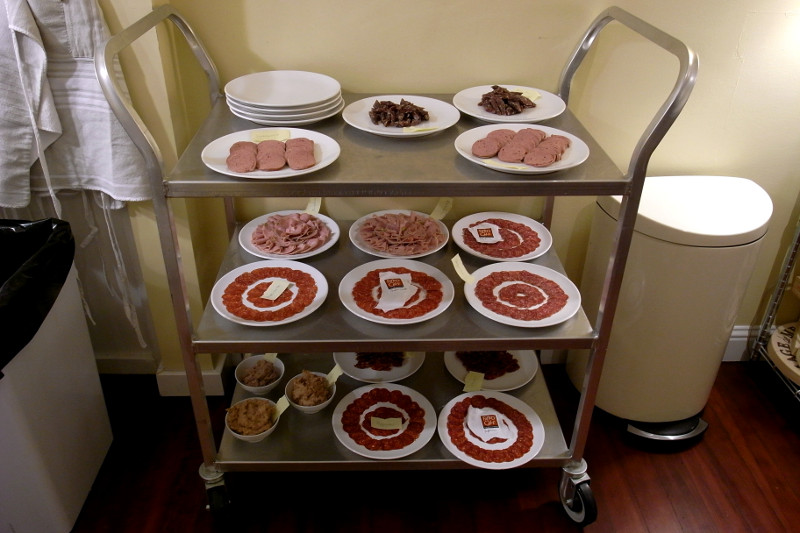
All told, we had nine types of artisanal charcuterie:
And then there was the cheese. Many of the other classes tend to focus on a specific type or region, but these were picked specifically to pair with the charcuterie above, and also because they were some of Wil Edwards’ favorites. So they represent a wide variety of very good cheeses.
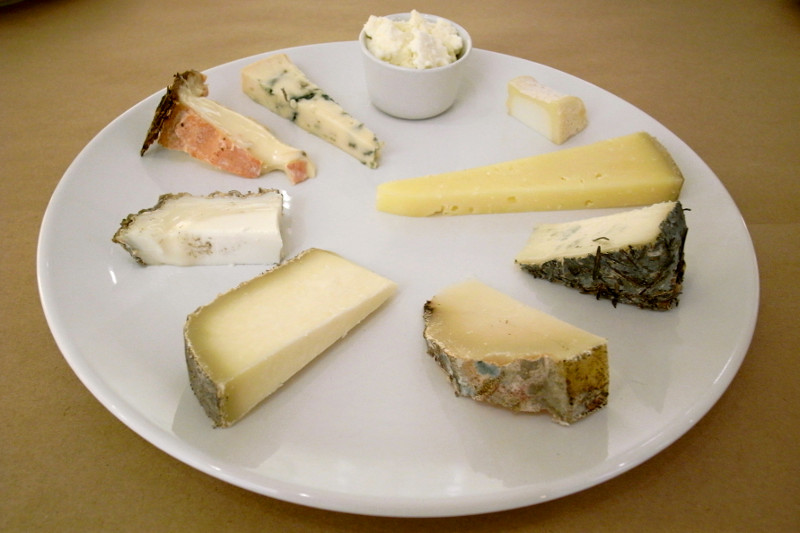
I marked my favorites with an asterisk per usual, but really they were all very good. The Bijou is like the crottin that Stephanie dreams of making, the Monte Enebro had this unusually creamy, multi-layered rind, and the Basajo Passito was the sweetest blue cheese I’ve ever tasted—I would go so far as to say I liked it, and I don’t really like blue cheese.